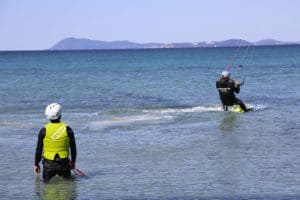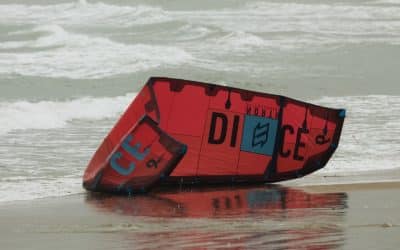Safety rules to follow when kitesurfing
Even if you are kitesurfing for fun, you should not forget that it is an intense sporting activity that takes place in the water. This means potential dangers. In order to reduce the risks as much as possible, it was necessary to set up safety rules that have become basic rules to master over the years. We will see the main safety rules that you should know and of course put into practice.
The basics

Before we delve into the finer points of the rules, there are a few that make sense. The first is reason. Don’t go kiteboarding in a spot that is too complicated for you. Always be sensible, even if you have the soul of an adventurer. It is always very dangerous. You have a level, respect it. This is not a movie. Your life can be put in danger if you want to do too much. Plan your practice area and stick to it. You should also keep an eye on the tide times or the presence of obstacles (rocks, wrecks…). And here again, plan ahead. Don’t go too far away. Ideally, you should be able to swim (or walk) back even if you are exhausted.
The weather is also important. Never leave without checking the forecast. Consult several sources and learn to recognise certain signs. Don’t leave without looking at the sky. Are dark clouds approaching very quickly? Stay away from the water!
Equipment is also important for safety
Once you know these conditions, you will also have to select your equipment so that it can accompany you safely (size of the wing, for example). The equipment must also be suitable for your body size.
Before you set off on your adventure, always check your equipment. The various safety systems must work perfectly. Your lines must be untangled. Practice a little on the sand if you have not practiced for some time and if necessary, take some lessons (you can get the addresses of the kitesurfing schools via the website of the French Federation of Free Flight).
To practice safely, it is also essential to wear protective gear. Lifejackets and helmets are essential.
Taking off well
Before you even set off far, you must take off and this is not done in just any conditions. First and foremost, you must secure the take-off area. Make sure there are no obstacles (people or other). To be on the safe side, it is best to take off in the water (the edge of a window is ideal).
Do not neglect the person you trust, more generally known as the assistant. But be careful, you can’t ask just anyone to be there! This person must know what to do to help you take off (positioning, untangling lines…).
Rules to know
Kitesurfing is about using common sense, but also about respecting important safety rules.
The first rule is priority. Know that the starboard side always has priority over the port side. This means that you should raise your kite when you pass another surfer and are upwind (starboard) of them. You should lower your kite if when you pass the other surfer you are downwind (port).
If you want to enter the water, you are considered to have priority over the one who wants to leave it. In the case of two kiteboarders sailing on the same tack, the one being overtaken will always have priority. Also remember to always look behind you when changing tack. Never initiate a jump with another rider if they are downwind.
Also be aware that you are potentially more dangerous when you are moving on the sand (well, the edge of the water) than in the water.
If you are already very good at kitesurfing, don’t forget that you can’t make up for any of your mistakes in winds of over 25 knots. A small kite is much more reactive. You should take this into account for your safety.
Still on the subject of skilled surfers. You are a master in the art of kitesurfing and that’s fine. But know two things. You are not alone and other riders may not be as good as you. Respect them and avoid riding too close to a beginner.
There will always be a master who is superior to you: nature. So don’t presume your abilities and always keep your wits about you. You could be in trouble if you are not reasonable. You won’t be ridiculous if you come home feeling tired. You will be ridiculous if you have an accident because you did not anticipate (we are exaggerating, but this way you understand what we mean). This is an important safety rule: always be reasonable.
Search
Catégories
Recent Posts
Suivez-nous !












